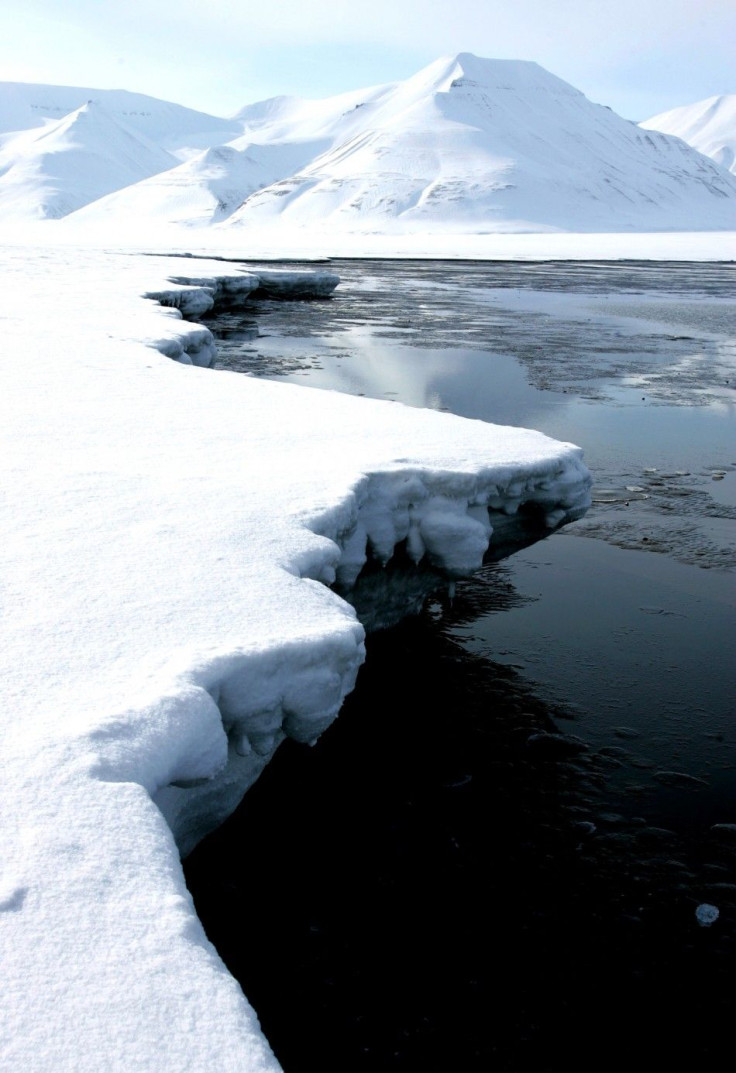Does Global Warming Portend an Ice-Free Arctic Summer?

Reports about an Arctic summertime sans ice due to global warming and natural swings in regional wind patterns are quite alarming. The extent of summer sea ice in the Arctic Ocean reached a record low this week since satellite observations began in 1972, according to the University of Bremen's Institute of Environmental Physics.
The area covered by the Arctic sea ice shrank to 4.24 million square kilometers (1.637 square miles) on Sept. 8, said researchers from the University.
The historic low measurement is about a half-percent below the previous record low set in Sept. 16, 2007, said Georg Heygster, head of the Physical Analysis of Remote Sensing Images unit at the University of Bremen's Institute of Environmental Physics.
The record set on that day was 4.27m sq km, reports the Guardian.
The declining Arctic sea ice has also become significantly thinner in recent decades, though it is not possible to measure the shrinkage in thickness as precisely as for surface area, said the institute.
Researchers at the National Center for Atmospheric Research (NCAR) in Boulder, Colo., attribute part of the shrinking Arctic sea ice cover to global warming. The other reason for declining ice cover is due to natural variations in regional wind patterns, they believe.
Heygster, along with his team at the University, believe that receding summer sea ice is a measure and driving factor of global warming, which has both local and planetary implications.
The sea ice retreat can no more be explained with the natural variability from one year to the next, caused by weather influence, said Heygster, in a statement released with the findings.
Climate models show, rather, that the reduction is related to the man-made global warming which, due to the albedo effect, is particularly pronounced in the Arctic.
The albedo effect is related to a surface's reflecting power - whiter sea ice reflects more of the sun's heat back into space than darker seawater, which absorbs the sun's heat and gets warmer.
Studies attribute the declining Arctic ice cover to rising temperatures in the region. Temperatures in the Arctic region have risen more than twice as fast as the global average over the last half century. Thus, the Arctic skull cap and Arctic ice cover are both reducing at a fast pace, the institute said.
The U.S. National Snow and Ice Data Center (NSIDC) also tracks Arctic ice cover on a daily basis but that agency has not announced a record low ice cover yet.
This stunning loss of Arctic sea ice is yet another wake-up call that climate change is here now and is having devastating effects around the world, said Shaye Wolf, climate science director at the Center for Biological Diversity in San Francisco.
NSIDC director Mark Serreze has said that summer ice cover could disappear entirely by 2030, leaving nothing but heat-trapping blue ocean, reports AFP.
However, an NCAR study published in the journal Nature in early August suggests that even within a long term warming trend, the loss of sea ice in the summer could stall, or even reverse itself for periods of up to a decade - at least through mid-century, reports the Christian Science Monitor.
© Copyright IBTimes 2024. All rights reserved.





















